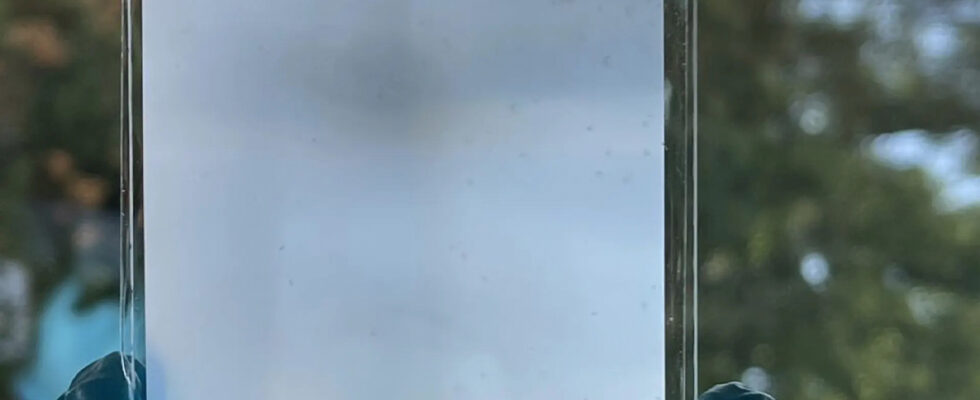A revolutionary material, more transparent than glass, offers an innovative solution for cooling rooms and ensuring privacy while self-cleaning. It could transform the construction of buildings and the layout of urban spaces.

Innovation in construction materials never ceases to amaze, as shown by the recent development of a transparent wooden smartphone screen. Eco-friendly and combining durability and clarity, it promises to revolutionize display technologies. In the same spirit, a new metamaterial could well change the way we design glass surfaces in buildings.
On the same subject – Apple is working on an unusual screen that corrects the main flaw in current folding smartphones
The new material, called Polymer-based Micro-photonic Multifunctional Metamaterial (PMMM), is presented in the form of a thin film which can be applied to ordinary glass. It has microscopic structures shaped like pyramidseach measuring only 10 microns wide. These diffuse 73% of the light that hits them, giving it a frosted appearance while being surprisingly more transparent than classic glass, with a light transmission of 95% versus 91% for most of them.


This transparent film can reduce the temperature of a room by 6°C
PMMM offers several notable advantages. In addition to its superior transparency, it allows you to create bright interior spaces without glare and with Protection of private life. This feature is particularly beneficial for offices and homes. In greenhouses, the high light transmission of PMMM could increase crop yield through photosynthetic efficiency estimated at 9% higher compared to glass greenhouses.
Also read – Have we seen Lenovo’s transparent computer, a glimpse of the future?
The most impressive ability of PMMM is its effect of radiative cooling. Using Earth’s atmosphere, which is transparent to infrared wavelengths, the material can dissipate heat directly into space. Tests showed it could hold a room at 6°C less than room temperature. Furthermore, this film is self-cleaning thanks to its superhydrophobic surface. Gan Huang, lead author of the study, pointed out that it could simultaneously optimize the use of indoor sunlight, provide a passive cooling and reduce reliance on air conditioning. The solution is scalable and can be integrated into ecological construction and sustainable urban development projects.
Source: nature.com
